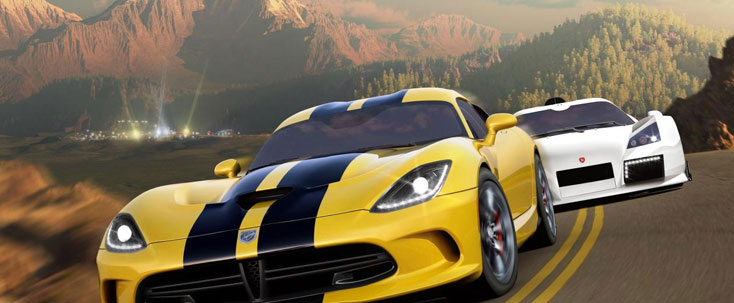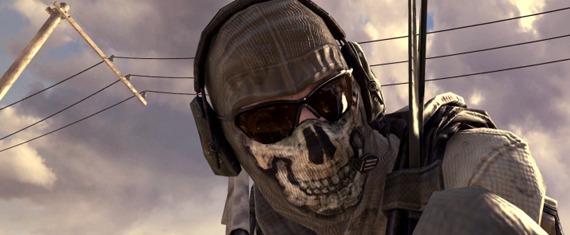(Ladies and) Gentlemen, start your engines. The new Forza Horizon 2 G-Shock car pack is now available for download on Xbox One, bringing a pack of six new cars to one of the best Xbox One racing games around. The Forza Horizon 2 G-Shock Car Pack costs $5, which pencils out to less than $1 per car.
The highlight of the pack is probably the 2015 Nissan IDx NISMO, which is making its videogame debut in Forza Horizon 2. The IDx prototype looks a bit retro in design, but under the hood it’s nothing but modern-day performance. The rest of the roster includes the Subaru Brat, 1975 Ford Bronco, Shelby Raptor, Ferrari 500 Mondial and 2010 Mazda Mazdaspeed 3.
We’ve included below a bit more about each of the cars included in the Forza Horizon 2 G-Shock car pack. If you just want to see them in action, you can check out this video too.
2015 Nissan IDx NISMO: When the IDx NISMO prototype debuted at the Tokyo Auto Show the overwhelming response was, “Yes please!” It didn’t take long for Nissan to state that the car would make it to production, though the company has yet to announce a date or provide details on its final configuration. We do know it will be rear wheel drive and its obvious cues from the legendary Datsun 510 are enough to make it a guaranteed fun to drive ride.
Nissan says the “ID” speaks to identity and “x” is a variable, but it doesn’t take much digging to realize that “D” is the Roman numeral for 500 and “X” represents ten. Whether you reminisce about the many 510’s that found success on the track, or the unending popularity of the line among enthusiasts, the IDx NISMO hits the spot. Some say underneath the body lies the heart of the mythical S15 but, on the outside, from the front fender-mounted camera mirrors to the side-dump exhaust, it’s obvious this little car plans on making its own history.
1980 Subaru BRAT GL: Developed at the request of the president of Subaru of America, the BRAT (Bi-drive Recreational All-terrain Transporter) followed the trend set by the Chevy El Camino and Ford Ranchero as half-truck, half-car. On paper, and due to the rear-facing bed-mounted jumpseats, the BRAT was technically a car, which got Subaru out of an excessive light truck tariff versus that of passenger cars imported from Japan. Underneath its coupe-utility body is the heart of the Subaru Leone station wagon. Under the hood is the Subaru EA flat-four and in the GL model represented here, a dual-range four-wheel drive system. Although humble in power output, the BRAT, like any Subaru, is meant to go places the average car wouldn’t dare.
2013 Ford F-150 SVT Raptor Shelby: As if the Special Vehicle Technologies group hadn’t done enough to make the Raptor something special, leave it to Shelby to turn this beast into a monster. Once the Shelby group gets a hold of one of the 500 trucks that will earn the Shelby badge, they dig deep and pull 575 horsepower out of the already potent 6.2-liter V8. On the intake side, that power comes from a 2.9-liter Whipple supercharger and a huge Whipple intercooler, then it exhales through a Shelby/Borla exhaust. Of course each truck is embossed with decals noting the lineage, but they will be hard to read through all the dust being dispersed as the Shelby Raptor does its thing.
1975 Ford Bronco: When Ford introduced the Bronco in 1966, the goal was to compete with the Jeeps and International Scouts that dominated the off road vehicle market. Ford went all-in and designed the Bronco from the ground up, although the axles and brakes were from the 4×4 F-Series. The result was a capable ORV that was simple and functional. By 1975 the Bronco was struggling for market share, partially in part due to its more car like design and a lack of power compared to the competition from GM and Mopar, by 1977 the Bronco was remade, larger and more truck like, and the original became an instant classic. Ready to wheel its way into your heart or into any backwoods, the original Bronco was “built Ford tough” long before the marketing slogan ever existed.
1953 Ferrari 500 Mondial: Ferrari is known for its elegant and robust 12-cylinder engines, but the 500 Mondial features a four-cylinder. Born in the post-World War II economy that was recovering from near devastation, the Mondial was built to fill the demand of professional and gentleman drivers seeking the podium. A four-cylinder could generate better low-end torque and enable quick corner exits. The lighter overall weight was also an advantage.
Drawing from the 500 F2 that dominated grand prix racing in 1952 and 1953, the Mondial was well balanced and quick. With coachwork from either Pinin Farina or Scaglietti – depending on if the car was series one or series two – it resembles the form of the 375 MM berlinettas and spyders of the era. Proving the formula was viable, Alberto Ascari and Luigi Villoresi scored a class win and second overall in the Mondial’s debut race at the 12 Hours of Casablanca.
2010 Mazda Mazdaspeed 3: For 2010, the much-loved Mazdaspeed 3 both changes and stays the same. What’s different is the revised sheet metal that brings a distinctive trapezoidal grille to the entire Mazda 3 range as part of the new “Nagare” design language—although in the Mazdaspeed version, the 3 gains a large hoodscoop to keep the intercooler cool. As you would expect, the Mazdaspeed 3 comes with stiffer suspension than the normal version, as well as a new torque management system to deal with the twist produced by the 2.3-liter four cylinder that is turbocharged to the tune of 263 horsepower and 280 ft-lbs. of torque. The result is just a hint of torque-steer, although not nearly as much as there would be without the limited slip differential.
Thanks to these technologies, the Mazdaspeed 3 is quick off the line, and pulls hard out of corners, almost as if it was equipped with all-wheel drive. It’s not; but for a front-driver with this much power on tap, the results are highly impressive. Also of note is the new boost gauge, an LED indicator vertically sandwiched between the tachometer and speedometer—just the kind of little sporting touch for which Mazda is known.


